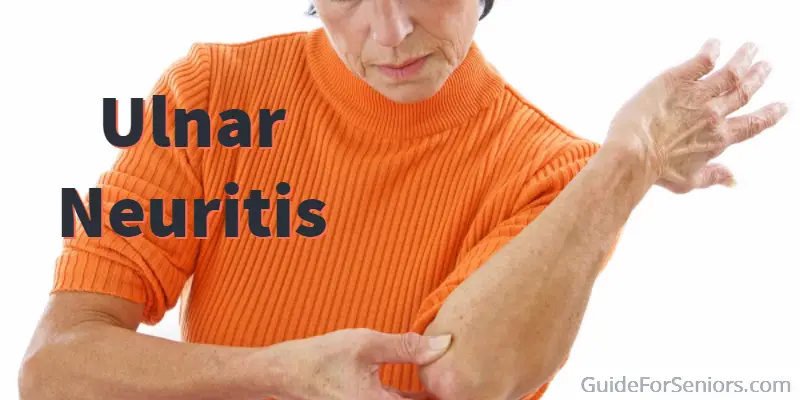ULNAR NEURITIS
Medically speaking, ulnar neuritis means inflammation of the ulnar nerve. It may be called cubital tunnel syndrome or cell phone elbow. The definition is misleading. Ulnar neuritis is compression or injury to the ulnar nerve which can occur at multiple sites in the arm. It occurs to those who are seniors and those who have not yet earned that distinction. Ulnar neuritis has nothing to do with aging or anti-aging. It simply hurts.
Minimal inflammatory response of the ulnar nerve or adjacent structures is present. The condition is common and usually resolves over time. The ulnar nerve is the “funny bone” of the elbow. When a person strikes their elbow on the posterior surface and gets numbness in the 4th and 5th fingers with moderate to severe pain, the ulnar nerve has been injured directly by acute compression of the nerve.
The discomfort and numbness usually resolve over several minutes. Nearly everyone has injured their “funny bone” and none want to repeat this discomfort.
HOW DOES CHRONIC ULNAR NEURITIS OCCUR?
For anyone with long-term ulnar neuritis, the pain is disabling. The chronic ulnar neuritis pain is due to repeat direct injury to the nerve, or chronic compression. The injury of the compression of the ulnar nerve is by far the most common at the posterior medial elbow. The nerve passes between elbow bones and a dense fibrous ligament/fascia.
In this location, the nerve has little room and is easily compressed by adjacent scarring or spurs from degeneration of the joint. The nerve becomes enlarged which further compresses the nerve. When viewed by an MRI exam of the elbow, the nerve has an abnormal size as well as edema. Physicians use the patient’s history, physical exam, and if necessary, an MRI scan to diagnose the condition.
CAN ULNAR NEURITIS OCCUR AT OTHER LOCATIONS?
Yes, the nerve can compress or become damaged in other locations. The next most common site is the ulnar side of the wrist. The ulnar nerve passes through a second narrow canal at the wrist. Trauma, masses, or aneurysm of the ulnar artery may compress the nerve.
The physical findings and pain pattern are different than elbow level compression but produce 4th and 5th finger numbness and pain. The ulnar nerve can be compressed anywhere along the path from shoulder to hand but it is uncommon outside of the elbow and wrist.
TREATMENT OF ULNAR NEURITIS
Most cases of ulnar neuritis resolve without treatment. People are aware of what is producing the pain and avoid the activity. For example, people with office jobs place their elbows on their desks and chronically compress their nerves. Placing your elbow in a different position or adding padding on the desk can alleviate the problem.
Elbow pads are very helpful and can be a medical grade or a much cheaper variety. Many times pads can be purchased at a sporting goods store. When ulnar neuritis is chronic, severe, and not improved by conservative means, surgery is the last resort. However, surgery is not always successful since the nerve may be permanently damaged or scar tissue may occur due to surgery. Remember, do not have surgery unless other treatments fail.
LONG TERM OUTLOOK
Ulnar neuritis is usually a benign, short-term disorder that resolves with conservative treatment. Even severe cases have a favorable outcome depending on the underlying cause. However, for the sufferers, the pain can be disabling. Understanding the cause and treatment is the best defense.







0 Comments